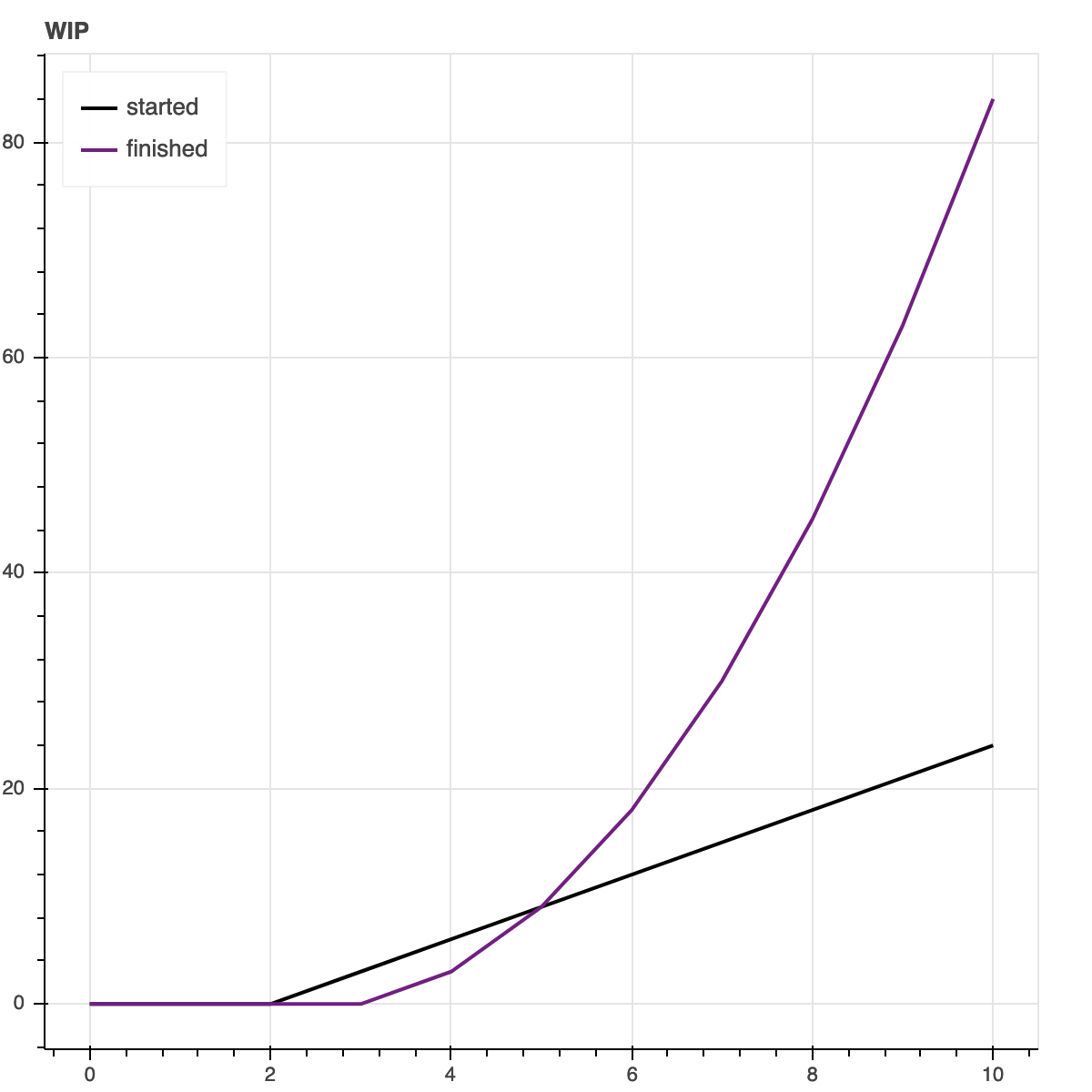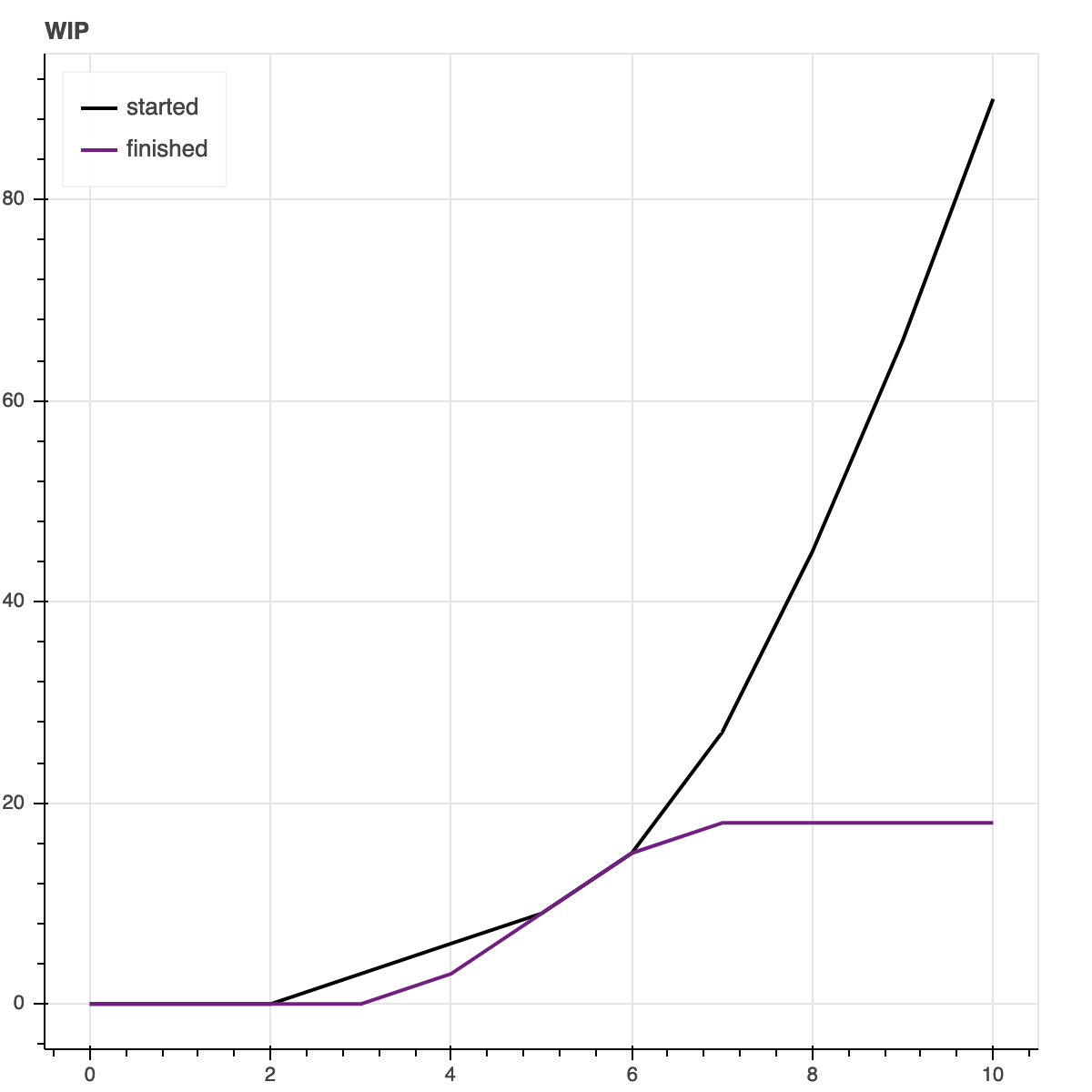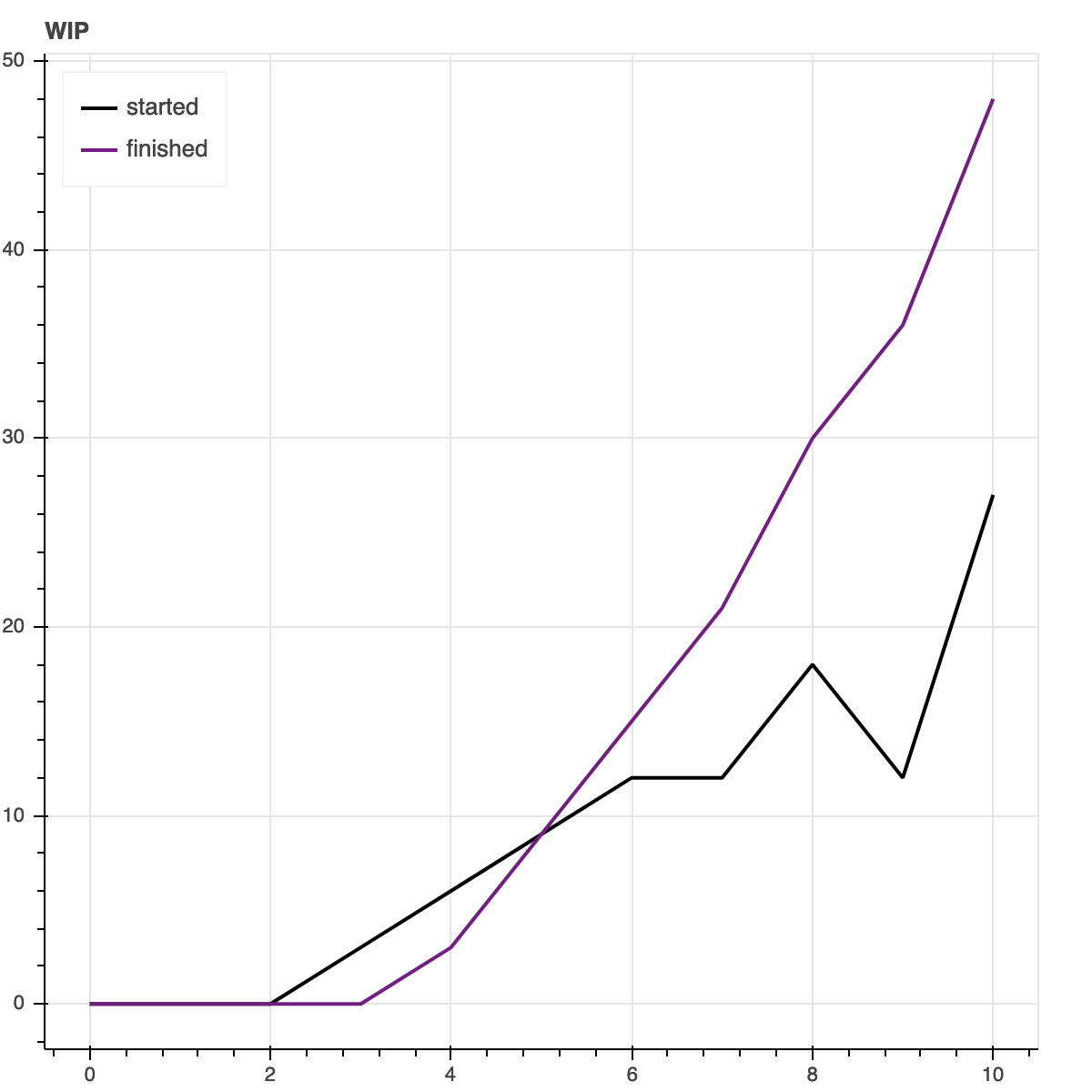Update: This post was trending on Hackernews in April 2021. See the discussion.
In many organizations today there is one thing that almost always is true: there are too many things done in parallel, there is too much work-in-progress, everyone is busy but nothing gets done. If this is so ubiquitous why is no one doing anything about it? Are people not aware or do they not know how to fix it? This is so predominant, that it almost is too easy to just claim:

One aspect I keep getting back to is the notion of software engineering organizations as production lines. As engineer I certainly refused this notion because software engineering is creative work, not repetitive moves in an assembly line. But the analogies made in The Phoenix Project and The Unicorn Project are way too convincing. Having gone through what in hindsight almost feels like a text book example of a manager applying exactly The Phoenix Project I come to believe that this is in fact the perfect analogy. Today, I fundamentally believe that the difference between a manager and a good manager is their level of understanding of it.
One simple blog post is surely not enough to dive into this topic. Many books have been written on the subject by people much more experienced than I am. This post is about an introduction to the topic, my own experience on it, and an invitation to read more about the topic.
Why is too much WIP bad? Link to heading
The first and most important question of course is to understand that having too much WIP is in fact bad. With too many projects in flight, the communication between individuals increases. Decision making is getting more complex with each additional stake-holder involved. And eventually everyone ends up working on the topic where the fire is burning most.
I want to illustrate the issue and it’s effects using systems thinking and a little turn-based game. This is modeled using Will Larson’s Systems library and is heavily inspired by his post on Why limiting work-in-progress works.
The rules are simple: each round we put in effort in the form of development. Ideas are turned into projects. We start, and finish them. Each transition, from project, to started, to finished is done at a certain rate. The game is played for ten rounds. In three scenarios I will demonstrate the effects of limiting WIP.
An ideal world Link to heading
In the first scenario we play the game in an ideal world. Each project can be started and stopped within one round respectively. The rate by which we start and finish projects are determined by the development effort we put in.
[] > Development @ 3
[Ideas] > Projects @ Development
Projects > Started @ Development
Started > Finished @ Development
The result can be seen here. In just ten rounds we are able to finish 84 projects. Quite remarkable.

Projects that take longer Link to heading
In reality we usually don’t finish all projects in each round. Instead we have projects move over to the next round. We model this by reducing the finish rate to the difference between the development capacity and the started projects.
What this essentially means is that we can only finish projects, when there is more capacity in development compared to started projects. The result is, that we reach a ceiling of finished projects, while the number of started projects keeps increasing. We are all busy but nothing gets done!
[] > Development @ 3
[Ideas] > Projects @ Development
Projects > Started @ Development
Started > Finished @ Development - Started
The system is so overwhelmed that it stops finishing projects. From round seven on the system is only able to start new projects without ever finishing anything ever after. The started projects are ever growing.

Limiting WIP Link to heading
The fix for this is of course to limit the number of projects we start! To do this, we adjust the rate of started projects similarly to the finish rate. This improves the amount of finished projects to 27 after ten rounds.
[] > Development @ 3
[Ideas] > Projects @ Development
Projects > Started @ Development - Started
Started > Finished @ Development - Started
We can create an even better outcome by reducing the rate of started projects even more:
[] > Development @ 3
[Ideas] > Projects @ Development
Projects > Started @ Development - (2 * Started)
Started > Finished @ Development - Started
This time we are finishing 48 projects!

Reducing the number of projects started even more does not have any effect at this point. The only way to improve the system’s output is by adding more development effort.
Key Insights Link to heading
I want to highlight two key insights here. The first one is that we can improve the output of a team or an organization by limiting work in progress. Fundamentally this means that we need to find the sweet spot between starting and finishing projects. A system that rewards starting projects will inherently fall into the trap of having too much WIP and eventually not be able to finish anything meaningful.
The role of management and leadership is to introduce barriers into when and how to start a new project. Additionally, celebrating finished projects that meet the quality bar is also important. Finishing a project and handing over the technical debt to another team means it is not finished.
The second insight is that having small batches is favorable compared to large projects that are taken over into the next rounds. If the projects are of a size that can be finished within an iteration, the system is able to get a lot more done.
The larger an organization is, the more likely large projects become. More people and teams need to align on a solution and more sign-offs are required from different departments. Limiting the number of those large projects in flight will have two effects: there will inherently be a higher quality bar on the projects started and there will be more room for small batches to occur within teams.
Symptoms of too much WIP Link to heading
In the context of a team the first indicator of too much WIP usually is that everyone in the team is working on something different. For every engineer in the team there is a separate task or even project. Daily stand ups are centered around people not work. There are also very few interactions between people during the stand up, so everyone just pushes their current status to the group.
The next obvious symptom is that everyone is busy but nothing gets done. In Scrum or Kanban you can easily visualize this by introducing a Waiting for Review state for example. Watch how it will grow over time as people are starting new tasks before reviewing other’s work.
Usually starting the next task is more important that finishing what is basically already finished but just needs a quick looks good to me (LGTM). Another side effect of having too much WIP is a decline in the quality of work produced. If everyone just quickly adds a LGTM to a PR, we miss things and certainly do not have the code in the best possible way. Only one person has worked on it in an opinionated way.
Fixing WIP in real life Link to heading
The practical fixes are of course not as simple as described in the models above. How can I find out what the ideal WIP limit is for the system I am in? So far I have started working with teams suffering from too much WIP. In those circumstances I found it best to start radical and limit the WIP to one. This can be one project or one main priority or the one thing we really need to get done in the next round.
Usually it takes a team a few iterations to learn. Before they were all busy and all working on many things. Now they might sometimes feel there is nothing to do and wonder what they should do with their free time. It only takes a few iterations though until collaboration within the team increases. This means earlier feedback loops on work-in-progress. The quality of finished projects increases which leads to a smaller number of incidents, fewer bugs, and less re-work.
After a few iterations and having recorded the learnings in retrospectives, we collectively decided to increase the WIP. This was an important step for me and the team: we were slowly learning to work on more than one topic in parallel while not sacrificing quality. From there on: rinse and repeat.
Conclusion Link to heading
Limiting work-in-progress is the tool every manager and leader needs to have in their tool belt. This is the one super power that over time will allow moving faster to the desired goal.
Unfortunately, most managers today are not aware of this and just keep pushing their teams to work faster. And fast usually means working on many topics at the same time.
It just feels good to always be busy.